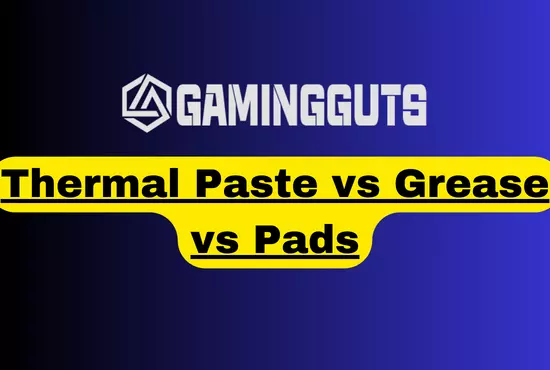Are you tired of your computer overheating during CPU/GPU-intensive tasks? Do you want to ensure your chip’s surface is completely covered with thermal paste to maintain its temperature? Look no further, as this article will guide you through mastering thermal paste and perfecting heat dissipation in your computer.
When it comes to applying thermal paste, there has been ongoing debate about the best method. Some people advocate for spreading it, others suggest using a dot or line pattern, and there are various other techniques as well.
Today, we have conducted a thorough investigation that lasted for more than 15 hours. Our main focus was to study the different ways of applying thermal paste and determine which method provides the best cooling performance.
Although similar tests have been done before, they did not consider the duration of the stress test or the amount of thermal paste used. However, our test took these factors into account.
In this article, we will examine the different thermal paste application methods and determine whether the choice of pattern really makes a significant difference.
Summary of Case Study: Identifying the Optimal Thermal Paste Application
When it comes to applying thermal paste, there are different methods to choose from, and the best one for you depends on your experience in handling thermal pastes.
If you’re familiar with applying thermal paste and have a good grasp of how to control the amount you use, then you have the flexibility to use any of the application methods available.
Whether it’s the dot method, spreading a thin layer, or creating a line pattern, you can confidently proceed with any of these techniques knowing that you won’t make a mistake.
However, if you’re new to applying thermal paste or don’t feel confident in your ability to control the amount, then the buttered toast method is highly recommended. This method involves spreading the thermal paste evenly across the surface of the CPU, much like spreading butter on a slice of toast.
By using a spreader or spatula, you can ensure that the paste is distributed smoothly and covers the necessary areas.
What makes the buttered toast method particularly suitable for beginners is that it allows for easy adjustment and removal of excess paste. If you accidentally apply too much paste, you can simply scrape off the excess using the spreader or spatula, ensuring that you achieve the optimal amount for efficient heat transfer.
This eliminates the need to estimate the correct volume of paste and rely solely on the pressure exerted by the heatsink to spread it evenly.
In contrast, other application methods may require more precision in estimating the right amount of thermal paste. With these methods, you typically apply a specific pattern or shape of thermal paste onto the CPU and then rely on the pressure applied by the heatsink when it’s installed to spread and distribute the paste across the surface.
This approach can be challenging for beginners, as it requires a level of guesswork and may result in uneven distribution or excess paste, leading to suboptimal thermal performance.
Ultimately, the choice of application method depends on your level of experience and comfort in handling thermal pastes. Whether you opt for the more versatile techniques suitable for experienced users or the user-friendly buttered toast method for beginners, the key is to ensure that the thermal paste is applied evenly and in the right quantity to facilitate effective heat transfer between the CPU and the heatsink.
Use around 0.2ml of thermal paste for a 30mm by 30mm processor, regardless of the application pattern, to achieve optimal thermal performance.
Importance and Effects of Thermal Paste
You already know about the importance of thermal paste and the effects of applying too much or too little, but let’s delve deeper into this topic.
Thermal paste ingredients play a crucial role in ensuring efficient heat dissipation between the processor or GPU and the heatsink. It is made up of materials such as zinc oxide, silicone, and aluminum, which have a high thermal conductivity and can transfer heat quickly.
Using thermal paste also has long-term benefits for your computer’s health. It can prevent overheating, which can cause damage to your processor or GPU. Overheating can also lead to system crashes and instability, which can affect your work productivity.
Alternative heat dissipation methods, such as air or water cooling, can be expensive and may not be necessary for most users. Therefore, using thermal paste is a cost-effective and practical solution for maintaining your computer’s efficiency.
Common Ways to Apply Thermal Paste
During the thermal paste application testing, several common application methods were evaluated to determine their impact on CPU temperatures.
The following are the specific methods that were tested:
Dot or Pi Method:
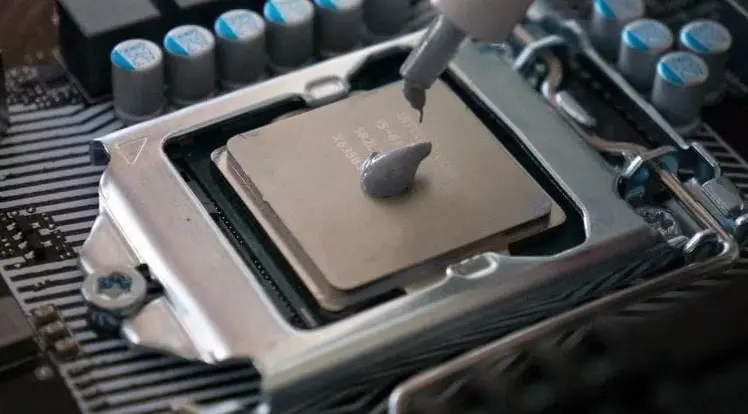
The Dot or P Method involves applying a small dot or pea-sized amount of thermal paste onto the center of the CPU. The dot method is one of the most widely used and straightforward techniques for applying thermal paste. When the heatsink is installed, the pressure spreads the paste evenly across the surface.
This method is recommended for experienced users who can accurately estimate the right amount of paste. The thermal paste is expected to spread naturally when the cooler is mounted and tightened.
Single Line Method:
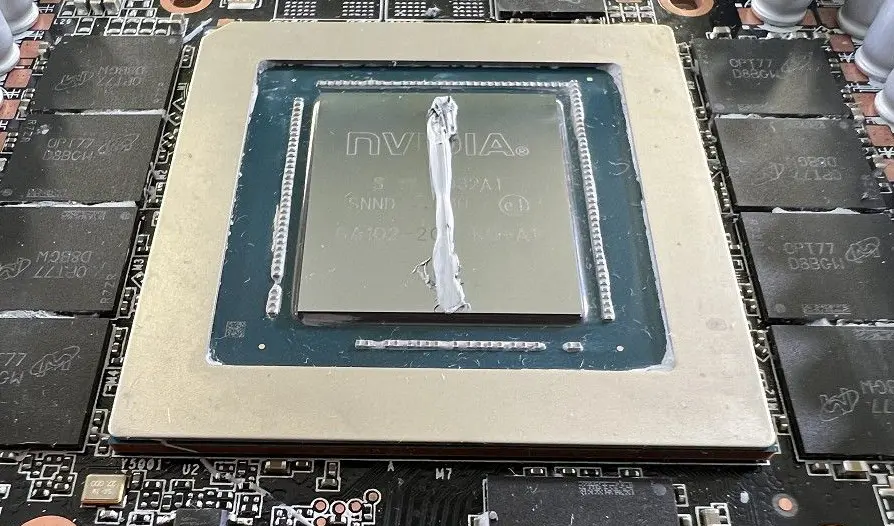
The Line Method involves applying a thin line of thermal paste across the center of the CPU. As the cooler is mounted, the paste is expected to spread more evenly due to the wider contact area. The spread after removing the cooler showed improved coverage compared to the Dot or P Method and Rice Grain Method.
3 Lines Method:
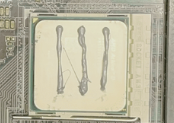
Apply three thin, parallel lines of thermal paste horizontally across the CPU surface. Ensure the lines are evenly spaced and cover the central portion of the CPU. When installing the heatsink, the pressure will spread and distribute the paste for effective heat transfer.
X/Cross Method:

The X or Cross Method requires applying a cross-shaped pattern of thermal paste on the CPU. The goal is to have more paste applied than in previous methods to ensure better coverage. The spread after removing the cooler exhibited good coverage, indicating improved thermal transfer.
Penta Dot Method:
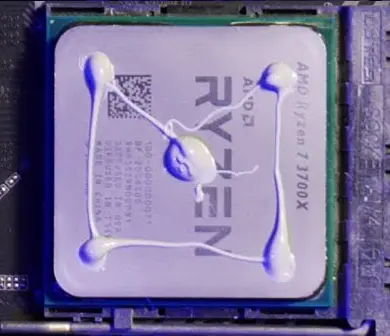
The Penta Dot Method, recommended by AMD for Ryzen CPUs, involves applying five small dots of thermal paste in a pentagon shape. This method is suitable for larger integrated heat spreaders (IHS) found on Ryzen CPUs.
Buttered Toast Method:
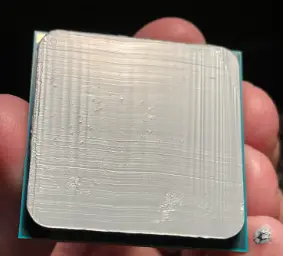
The Buttered Toast Method is an increasingly popular approach that advocates spreading a thin layer of thermal paste evenly across the entire CPU surface. The goal is to achieve maximum coverage and eliminate any air gaps. The spread after removing the cooler demonstrated the best coverage among all the tested methods.
Different Ways to Spread Thermal Paste
There are various ways to spread thermal paste on a CPU surface. Here are three common methods:
Spreading with a Spreader or Plastic Card
Place a small amount of thermal paste on the CPU. Use a dedicated thermal paste spreader or a clean plastic card to evenly spread the paste across the CPU surface. Apply gentle pressure and make smooth strokes until the paste covers the desired area uniformly.
Spreading with a Thermal Paste Applicator
Some thermal paste products come with applicators designed specifically for spreading. Squeeze a small amount of paste onto the CPU. Use the applicator provided with the thermal paste to spread the paste evenly over the CPU surface. Follow the instructions provided by the thermal paste manufacturer for the best results.
Spreading with the Heatsink
Apply a small dot or a line of thermal paste onto the center of the CPU. Place the heatsink on top of the CPU, ensuring proper alignment and contact. Secure the heatsink in place, and the pressure from the heatsink installation will naturally spread the thermal paste across the CPU surface.
Tips for Even Application
Achieving an even application of thermal paste can be done by using a thermal paste spreader or a plastic card. Here are some tips for achieving an even application:
- Start with a small amount of thermal paste and add more as needed. Too much paste can cause leakage and poor heat dissipation.
- Apply the paste in a thin layer, making sure to cover the entire surface of the chip. Use a spreader or card to ensure even coverage.
- Avoid applying too much pressure when spreading the paste. This can cause air pockets and poor heat transfer.
- Clean the chip and heat sink thoroughly before applying the paste to ensure the best possible contact.
- Finally, double-check your work before reassembling the computer. Make sure the paste has been spread evenly and there are no air pockets.
Common mistakes when applying thermal paste include using too much paste, not spreading the paste evenly, and not cleaning the chip and heat sink before application. By following these tips and techniques, you can ensure a proper and even application of thermal paste, leading to improved heat dissipation and better performance from your computer.


